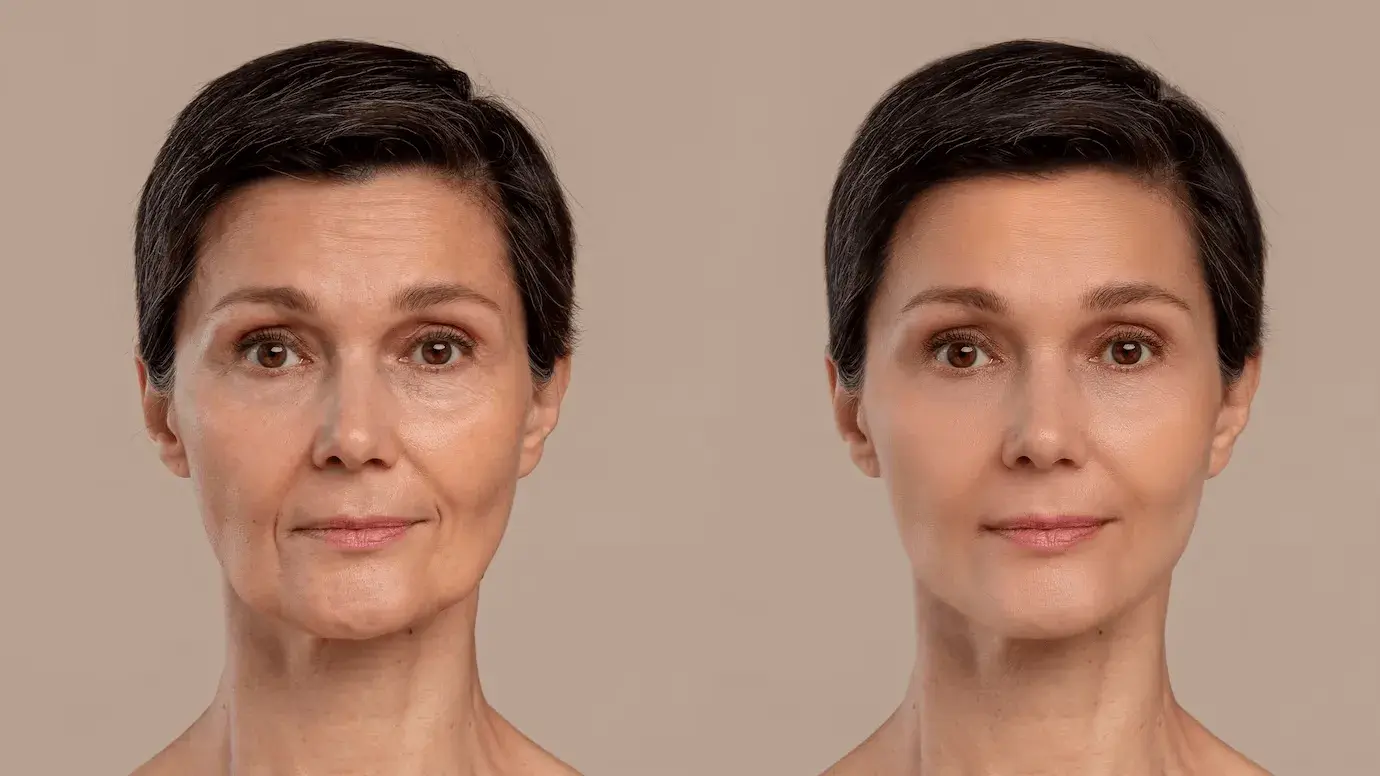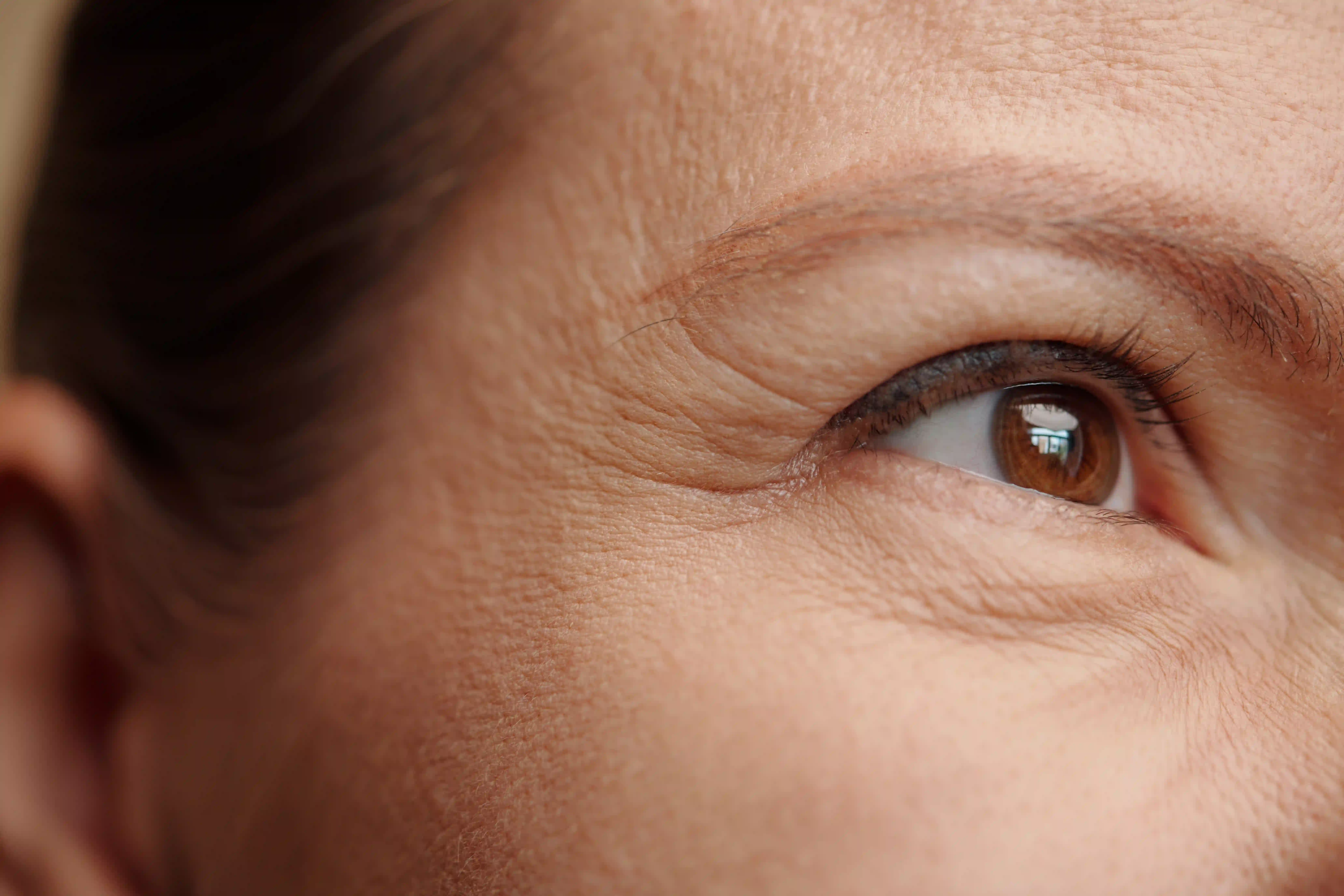Hiperpigmentasi Kulit Wajah: Penyebab dan Cara Mengatasinya
28/08/2024<p>Beauties sudah tahu belum apa itu hiperpigmentasi kulit? Hiperpigmentasi kulit wajah merupakan sebuah masalah dermatologis yang umum terjadi dan dapat mempengaruhi tidak hanya aspek kecantikan, tetapi juga tingkat percaya diri seseorang. Secara sederhana, hiperpigmentasi terjadi ketika produksi melanin di kulit meningkat, menghasilkan bercak gelap atau noda yang tidak merata pada permukaan kulit. Biasanya, hiperpigmentasi lebih sering terjadi di area wajah yang lebih terpapar sinar matahari. </p><p> </p><p>Oleh karena itu, dalam artikel ini, beauties akan menjelajahi berbagai aspek terkait hiperpigmentasi kulit wajah, mulai dari penyebabnya hingga cara-cara mengatasi serta mencegahnya. Melalui pemahaman yang lebih mendalam tentang masalah ini, diharapkan pembaca dapat menemukan solusi yang efektif untuk menjaga kesehatan dan kecerahan kulit wajahnya. </p><p> </p><h2>Apa itu Hiperpigmentasi Kulit?<strong> </strong></h2><p> </p><p>Hiperpigmentasi merupakan salah satu permasalahan kulit yang sering dihadapi, disebabkan oleh produksi melanin yang berlebihan. Tingkat kejadian hiperpigmentasi di Indonesia cukup tinggi, hal ini disebabkan oleh jenis kulit masyarakat Indonesia yang termasuk dalam kategori tipe 4 dan 5 dalam<i> Fitzpatrick skin phototypes</i>, di mana jarang terjadi <i>sunburn </i>dan cenderung kulit selalu menggelap. </p><p> </p><p>Selain itu, kondisi iklim tropis di Indonesia serta paparan sinar matahari yang <i>intens </i>juga menjadi faktor peningkatan insiden hiperpigmentasi. Melasma, sebagai contoh paling umum dari hiperpigmentasi, biasanya muncul pada wanita usia reproduktif, yakni antara 20 hingga 45 tahun, dan sering terjadi di negara-negara dengan iklim tropis. Hiperpigmentasi ini dapat menyebabkan ketidaknyamanan kosmetik yang dapat mempengaruhi penampilan dan kualitas hidup individu secara signifikan.</p><p> </p><p>Berikut gejala hiperpigmentasi:</p><p> </p><ul><li><strong>Bercak gelap pada kulit</strong>: Munculnya flek hitam pada kulit, yang dapat berukuran kecil atau besar.</li><li><strong>Penyebaran bercak</strong>: Bercak dapat meluas ke berbagai area tubuh, termasuk wajah, leher, lengan, lutut, atau bagian tubuh lainnya.</li><li><strong>Wajah tampak kusam</strong>: Bercak gelap dapat membuat wajah terlihat lebih kusam dan warna kulit tidak merata.</li><li><strong>Tidak ada rasa sakit atau gatal</strong>: Hiperpigmentasi tidak menyebabkan rasa sakit atau gatal pada kulit.</li><li><strong>Mengganggu penampilan</strong>: Meskipun tidak menimbulkan rasa sakit, hiperpigmentasi dapat membuat penderitanya merasa tidak percaya diri.</li></ul><p> </p><p><strong>Baca Juga: </strong><a href="https://nulook.co.id/id/news-articles/cara-menghilangkan-kulit-bertekstur"><strong>9 Cara Menghilangkan Kulit Bertekstur dengan Benar</strong></a></p><p> </p><h2>Faktor-faktor Penyebab Hiperpigmentasi Kulit Wajah </h2><p> </p><p>Terdapat beberapa faktor yang dapat menyebabkan hiperpigmentasi kulit wajah yang perlu beauties ketahui, meliputi genetik, gangguan nutrisi, faktor hormonal, paparan sinar UV atau matahari, penggunaan kosmetika tertentu, konsumsi obat-obatan oral, peradangan, dan bahkan keganasan. Simak di bawah ini:</p><p> </p><h3>1. Genetik </h3><p> </p><p>Faktor genetik memainkan peran penting dalam menentukan kerentanan seseorang terhadap hiperpigmentasi. Individu dengan riwayat keluarga yang memiliki masalah hiperpigmentasi cenderung memiliki risiko yang lebih tinggi untuk mengalami kondisi serupa.</p><p> </p><h3>2. Gangguan Nutrisi<strong> </strong></h3><p> </p><p>Gangguan nutrisi juga menjadi salah satu penyebab hiperpigmentasi kulit wajah lho, beauties! gangguan nutrisi seperti kekurangan protein, asam folat, dan vitamin B12 juga dapat berkontribusi pada munculnya hiperpigmentasi. Kondisi ini dapat mempengaruhi metabolisme melanin dalam tubuh dan menyebabkan produksi melanin yang tidak seimbang, yang pada gilirannya dapat mengakibatkan hiperpigmentasi kulit.</p><p> </p><h3>3. Hormonal<strong> </strong></h3><p> </p><p>Faktor hormonal, seperti peningkatan hormon estrogen dan progesteron, juga dikaitkan dengan terjadinya hiperpigmentasi. Hal ini dapat terjadi selama kehamilan, penggunaan kontrasepsi hormonal, atau bahkan saat mengalami perubahan hormonal yang alami, seperti menstruasi.</p><p> </p><h3>4. Sinar UV atau Matahari<strong> </strong></h3><p> </p><p>Paparan sinar UV atau matahari merupakan salah satu penyebab utama hiperpigmentasi yang paling sering terjadi. Sinar UV dapat merangsang melanosit untuk memproduksi melanin lebih banyak sebagai respons terhadap kerusakan yang diakibatkan oleh sinar tersebut. Akibatnya, bercak gelap atau noda dapat muncul pada kulit yang terpapar sinar matahari secara berlebihan.</p><p> </p><h3>5. Kosmetika dan Obat-obatan Oral</h3><p> </p><p>Apakah beauties tahu jika penggunaan kosmetik juga merupakan salah stau penyebab dari terjadinya hiperpigmnetasi kulit wajah? Terutama jika kosmetik tersebut mengandung bahan-bahan yang bersifat fototoksik atau pewangi yang kuat. Selain itu, konsumsi obat-obatan oral tertentu, seperti arsen, merkuri, atau minosiklin, juga telah terbukti dapat menyebabkan hiperpigmentasi pada kulit.</p><p> </p><h3>6. Inflamasi Kulit<strong> </strong></h3><p> </p><p>Inflamasi kulit juga dapat menjadi pemicu hiperpigmentasi. Bekas luka, jerawat, atau kondisi inflamasi lainnya dapat merangsang produksi melanin yang berlebihan di area yang terkena, menyebabkan pigmentasi yang tidak merata.</p><p> </p><h3>7. Keganasan</h3><p> </p><p>Apa yang dimaksud denga keganasan dan hubungannya penyebab hiperpigmentasi? Keganasan atau kanker kulit juga dapat menyebabkan hiperpigmentasi. Beberapa jenis kanker kulit, seperti melanoma atau karsinoma sel basal, seringkali disertai dengan perubahan warna pada kulit yang terkena, termasuk peningkatan pigmentasi.</p><p> </p><p><strong>Baca Juga: </strong><a href="https://nulook.co.id/id/news-articles/manfaat-kolagen-untuk-kulit"><strong>7 Manfaat Kolagen untuk Kulit dan Cara Meningkatkannya</strong></a></p><p> </p><h2>Jenis Hiperpigmentasi Pada Wajah</h2><p> </p><p>Untuk dapat mengatasi hiperpigmentasi dengan baik, kamu sebaiknya tahu terlebih dahulu jenis-jenis hiperpigmentasi pada wajah. Berikut adalah beberapa di antaranya:</p><p> </p><h3>1. Solar Lentigo</h3><p> </p><p>Solar Lentigo umumnya disebabkan oleh paparan sinar ultraviolet (UV) matahari yang berlebihan pada kulit wajah yang tidak dilindungi tabir surya. Sinar UV menembus lapisan kulit dan merangsang melanosit untuk memproduksi melanin secara berlebih sebagai mekanisme pertahanan alami. Akibatnya, muncul bercak-bercak hiperpigmentasi yang tidak beraturan dengan ukuran sekitar 1-3 cm.</p><p> </p><h3>2. Post Inflammatory Hyperpigmentation (PIH)</h3><p> </p><p>Post-inflammatory hyperpigmentation, atau Hiperpigmentasi Pasca Inflamasi, merupakan kondisi kulit yang ditandai dengan munculnya bercak gelap pada area kulit yang sebelumnya mengalami peradangan. Peradangan ini bisa disebabkan oleh berbagai faktor, seperti jerawat, luka, atau iritasi kulit lainnya. Mekanisme terjadinya PIH cukup sederhana: sebagai respons terhadap peradangan, tubuh meningkatkan produksi melanin, pigmen yang memberikan warna pada kulit. Peningkatan melanin inilah yang menyebabkan munculnya hiperpigmentasi, atau bercak gelap, pada area yang terluka.</p><p> </p><h3>3. Melasma</h3><p> </p><p>Melasma adalah kondisi kulit yang sering dialami oleh ibu hamil, wanita yang menggunakan kontrasepsi hormonal, serta individu yang sering mengalami stres. Perubahan hormonal yang signifikan pada kelompok-kelompok ini seringkali menjadi pemicu utama munculnya bercak-bercak hiperpigmentasi khas melasma.</p><p> </p><p>Bercak-bercak ini umumnya memiliki batas yang jelas dengan warna bervariasi, mulai dari cokelat muda hingga abu-abu tua, dan cenderung berukuran agak besar. Menariknya, melasma seringkali bersifat sementara dan dapat memudar dengan sendirinya setelah kondisi hormonal kembali seimbang.</p><p> </p><h2>Cara Mengatasi dan Mengobati Hiperpigmentasi Kulit Wajah<strong> </strong></h2><p> </p><p>Meski sering disebabkan oleh paparan sinar matahari berlebih, faktor lain seperti perubahan hormon dan peradangan juga berkontribusi. Untungnya, ada berbagai cara untuk mengatasi dan mengobati hiperpigmentasi, baik dengan perawatan alami maupun medis yang terbukti efektif.</p><p> </p><h3>1. Hidrokinon dengan kosentrasi 2-4%</h3><p> </p><p>Beauties, pasti kamu udah kenal dengan krim ini yang biasanya diolesin pas malam hari dan dianggap sebagai langganan utama untuk mengatasi hiperpigmentasi. Tapi, jujur saja, karena efek samping yang kadang bikin kulit jadi dermatitis alergi dan iritasi, ditambah kebiasaan berhenti pakai dan kambuhnya masalah, sekarang banyak yang beralih ke bahan-bahan yang lebih alami dan tidak terlalu bikin masalah, contohnya asam kojic dan arbutin.</p><h3> </h3><h3>2. Asam Retionat </h3><p> </p><p>Kamu juga bisa pakai krim ini di malam hari sebagai terapi tambahan dan kombinasi. Krim ini berperan sebagai pelunakan kulit dan membantu mengurangi ketebalan lapisan terluar kulit (stratum corneum) serta mengurangi jumlah melanin. Tapi, perlu diingat, jika dipakai dalam konsentrasi tinggi, bisa menyebabkan iritasi.</p><h3> </h3><h3>3. Vitamin C </h3><p> </p><p>Vitamin C sering dikonsumsi secara oral dengan dosis 1 gram per hari, yang dapat menghambat proses pembentukan melanin, sementara glutation yang diminum secara oral dianggap dapat menghambat aktivitas enzim tirosinase yang terlibat dalam pembentukan pigmen.</p><h3> </h3><h3>4. Chemical Peeling<strong> </strong></h3><p> </p><p>Chemical peeling adalah prosedur kosmetik menggunakan zat kimia untuk mempercepat pengelupasan sel kulit, merangsang regenerasi kulit baru, dan mengurangi hiperpigmentasi. Metode ini umum digunakan oleh profesional kecantikan untuk memperbaiki penampilan kulit dengan hasil yang memuaskan.</p><h3> </h3><h3>5. Microdermabrasi<strong> </strong></h3><p> </p><p>Microdermabrasi adalah metode eksfoliasi kulit dengan menggunakan diamond halus untuk mengangkat sel-sel kulit mati dan pigmen. Ini memperbaiki tekstur dan kecerahan kulit serta merangsang produksi kolagen. Perawatan ini aman dan efektif untuk mengurangi hiperpigmentasi dan bekas jerawat. Disarankan untuk berkonsultasi dengan profesional sebelum menjalani perawatan.</p><h3> </h3><h3>6. IPL<strong> </strong></h3><p> </p><p>IPL (<i>Intense Pulse Light</i>) adalah metode pengobatan hiperpigmentasi kulit menggunakan sinar spektrum luas untuk menghancurkan melanin. Proses ini merusak sel-sel melanosit yang memproduksi melanin, memecahkan pigmen tersebut, dan merangsang regenerasi kulit. Keuntungannya adalah prosedur non-invasif dengan waktu pemulihan yang singkat, namun sering memerlukan beberapa sesi perawatan. Sebelumnya, konsultasikan dengan dokter kulit untuk evaluasi yang tepat.</p><h3> </h3><h3>7. Laser </h3><p> </p><p>Penggunaan laser dalam perawatan kulit adalah metode yang efektif untuk mengurangi hiperpigmentasi. Dalam prosedur ini, laser memancarkan panjang gelombang tertentu untuk menyerap dan menghancurkan melanin dalam kulit. Keunggulan laser adalah kemampuannya untuk memberikan hasil yang spesifik tanpa merusak jaringan kulit sekitarnya. </p><p> </p><p>Namun, perlu beberapa sesi perawatan untuk hasil optimal dan perlunya perawatan kulit pasca-perawatan yang cermat. Sebelum menjalani laser, konsultasikan dengan dokter kulit untuk evaluasi yang tepat.</p><p> </p><p><strong>Baca Juga: </strong><a href="https://nulook.co.id/id/news-articles/cara-menghilangkan-kulit-merah-di-wajah"><strong>Tips Ampuh! 7 Cara Menghilangkan Kulit Merah di Wajah</strong></a></p><p> </p><p>Dalam menangani hiperpigmentasi kulit wajah, beauties telah menjelajahi berbagai metode perawatan yang dapat membantu mengatasi masalah ini. Salah satu layanan perawatan yang patut dipertimbangkan adalah <a href="https://nulook.co.id/id/services/thermage-treatment"><i><strong>Thermage</strong></i></a>, sebuah terapi radio frekuensi non-invasif yang dirancang khusus untuk mengatasi tanda-tanda penuaan pada kulit wajah dan leher. </p><p> </p><p><i>Thermage </i>dapat membantu mengencangkan kulit yang kendur, meningkatkan elastisitas, dan merangsang produksi kolagen untuk mencapai kulit yang lebih muda dan sehat. </p><p> </p><p>Selain itu, ada juga teknologi yang menawarkan solusi terkini dalam mengatasi hiperpigmentasi dan masalah kulit lainnya. Karena, dengan menembakkan sinar laser dalam waktu sangat singkat, <a href="https://nulook.co.id/id/services/pico-laser-treatment"><i><strong>Pico Plus Laser</strong></i></a><strong> </strong>dapat secara efektif menghilangkan noda pigmentasi tanpa merusak kulit sekitarnya. Beauties juga tidak perlu khawatir karena kedua layanan ini sudah ada di Nulook yang merupakan <i>Korean Beauty Clinic </i>pertama di Bali. </p><p> </p><p>Oleh karena itu, jika kamu mencari solusi untuk kulit yang kendur, berjerawat, atau hiperpigmentasi, <i>Thermage</i> dan <i>Pico Plus Laser </i>bisa menjadi pilihan yang menarik untuk menjadikan kulitmu lebih cerah dan berseri. Jangan ragu untuk berkonsultasi dengan profesional kesehatan kulit di Klinik Kecantikan <a href="https://nulook.co.id/"><strong>Nulook</strong></a><strong> </strong>untuk mendapatkan saran yang tepat sesuai dengan kebutuhan kulitmu.</p><p> </p><p>Sumber rujukan:</p><p><a href="https://www.ncbi.nlm.nih.gov/pmc/articles/PMC10304091/#:~:text=3.2.&text=The%20most%20frequent%20cause%20of,and%20age%20spots%20%5B24%5D">https://www.ncbi.nlm.nih.gov/pmc/articles/PMC10304091/#:~:text=3.2.&text=The%20most%20frequent%20cause%20of,and%20age%20spots%20%5B24%5D</a>.</p><p><a href="https://www.ncbi.nlm.nih.gov/pmc/articles/PMC4142815/">https://www.ncbi.nlm.nih.gov/pmc/articles/PMC4142815/</a></p><p><a href="https://osf.io/9awq6/download">https://osf.io/9awq6/download</a></p>
Baca Selengkapnya























